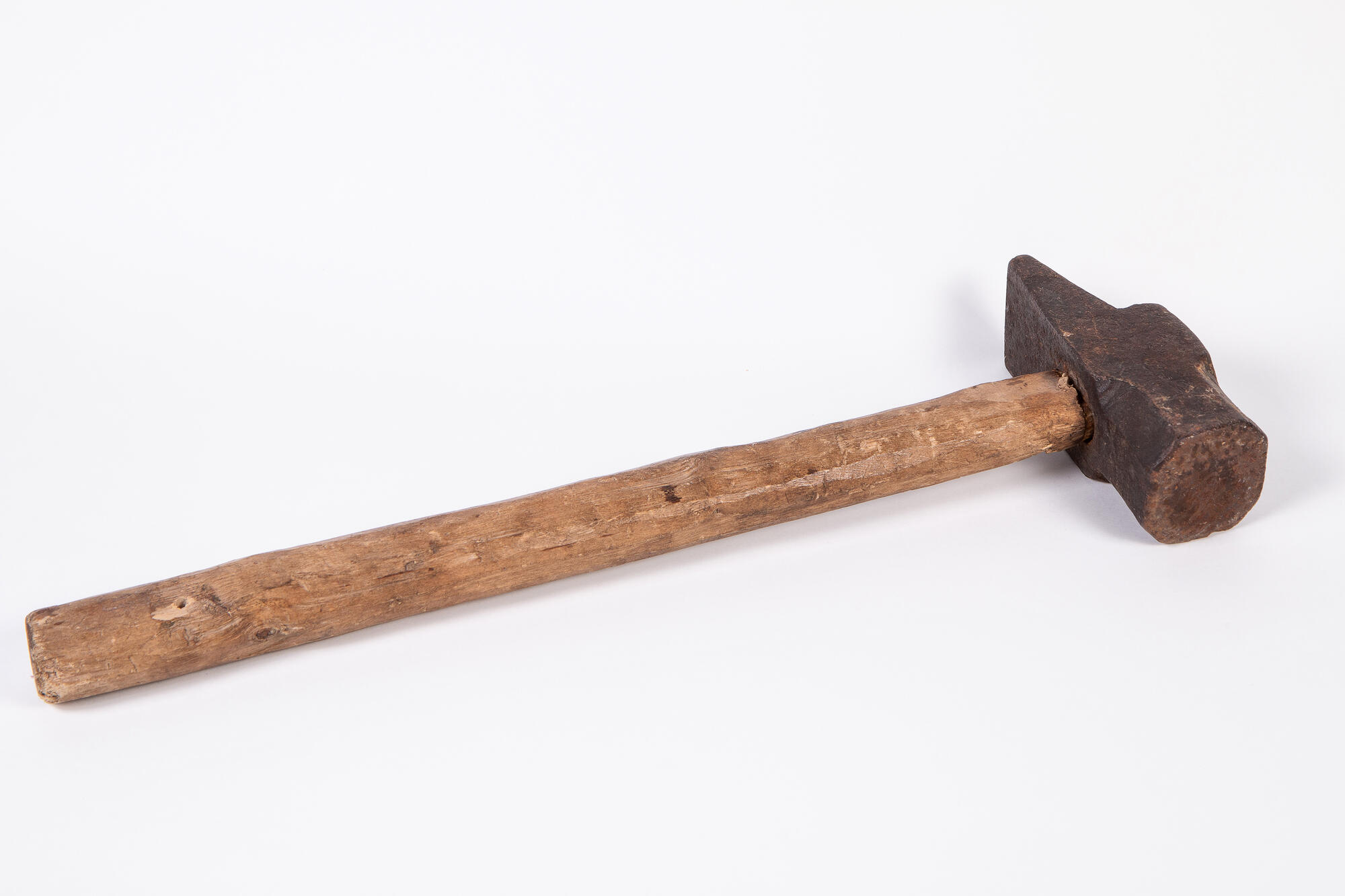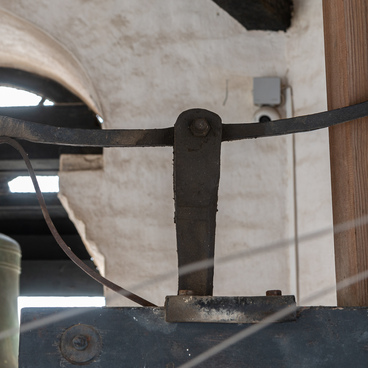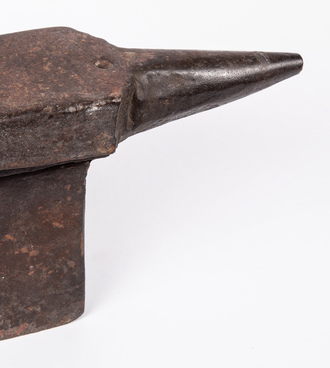Blacksmithing was one of the most widespread trades in the village of Nevyansky plant in the 18th — early 20th centuries. This was due to the presence of the metallurgical plant, the availability of skilled craftsmen and raw materials for production. The indispensable tools of a blacksmith are bellows, which were used to blow air to the fire, as well as a hammer, an anvil, pliers, and a vice. The materials used were made of various types of iron, steel, and sometimes copper sheets.
The presented hammer was made at the end of the 19th century. The head of the hammer has a faceted block with smoothed corners on one side and a flattened, pointed edge on the other side. The handle is made of wood. Blacksmiths produced various metal tools, household utensils, chains, harnesses, cowbells, bells and much more, both for sale and for their own use.
Blacksmith hammers are an indispensable tool in forging. They act as an impact factor when forming blanks using the free hot forging method. The hammer head is used in the main forging process, and the upper wedge-shaped edge is for moving the metal toward and against the user.
If a blacksmith constantly works with only one hammer, then its working metal surface will become less hard and begin to deform. Therefore, as soon as the metal part of the hammer begins to change shape, blacksmiths remove it from the handle, heat it, level it under the blows of another hammer and harden it again. After this, the hammer can serve the blacksmith again.
Bellows created the conditions for forging, or, as it is also called, forge welding, helping to maintain a high temperature of the metal surfaces. At first, the metal was heated to a temperature of 1,500–1,600°C, which in blacksmithing parlance was called the “white heat”. The metal then began to glow with a bright yellow color. After that, mill scale was removed from the metal surfaces, and they were hammered to join. Experienced craftsmen could determine the readiness of the metal for further forging by the color of hot metal. If you overheat the iron, it will be too brittle; if you do not heat the iron enough, you will not be able to forge it.




